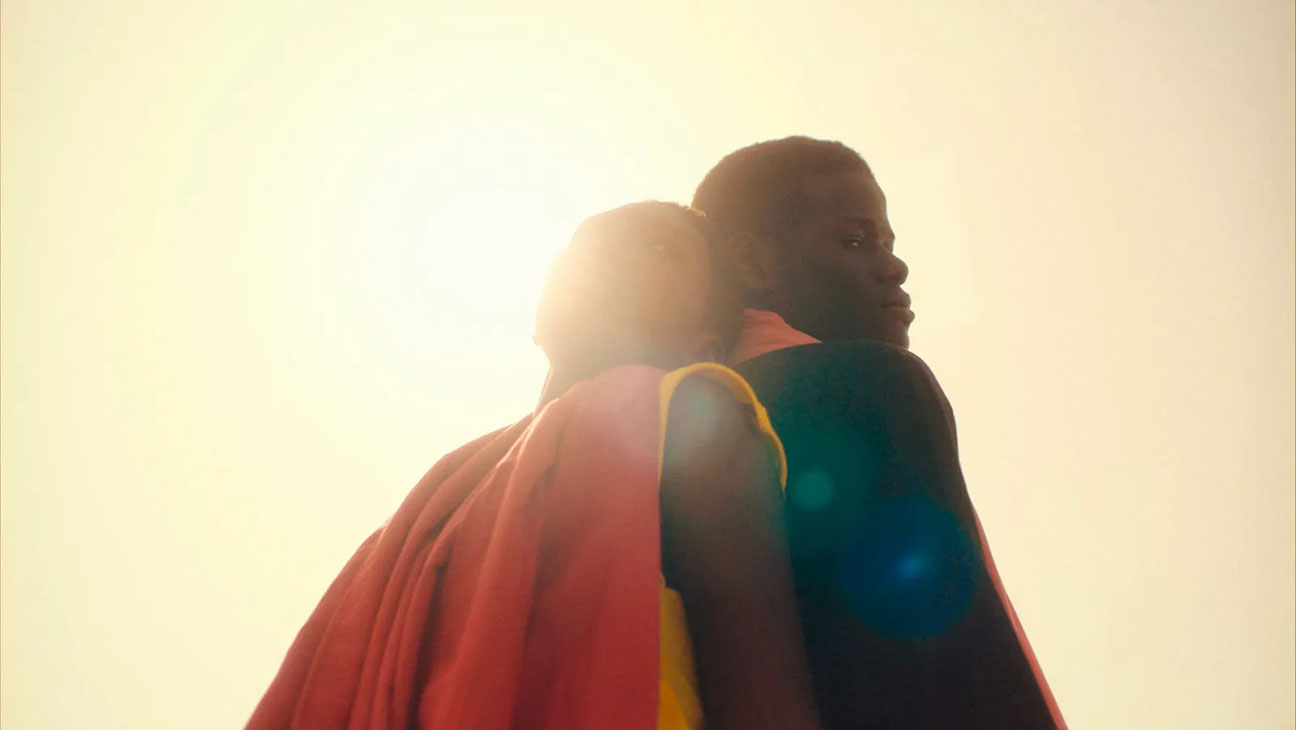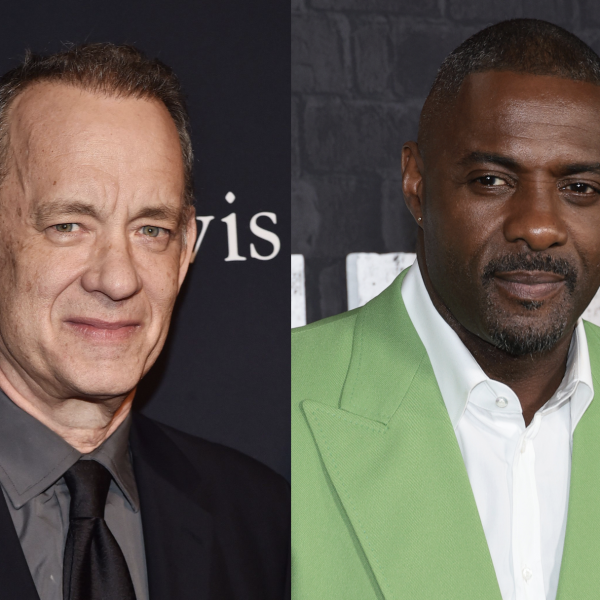There is a sultry elusiveness to Ramata-Toulaye Sy’s debut feature that makes it hard to articulate its subject or even its genre. Is this a riff on “Romeo & Juliet”, filtered through Senegalese village life? Or is it a sci-fi fable, with the mirage-like heat reflecting a slow descent into personal madness a la Lars von Trier’s “Melancholia”? “Banel & Adama” is a striking debut that puts Sy on the map as a purveyor of deceptively gorgeous visions that show flimsy desires at the mercy of the social, and literal, weather. A drought can suck dry the fiercest emotional bonds, so what use is romantic love when people are dying of heat?
We hear their names first, as intimate whispers repeat, “Banel and Adama,” and DP Amine Berrada films dancing sunbeams that refract into mysterious shapes. We then see a piece of paper with their names written down together, over and over, ad infinitum, before being told in voice-over about a girl who drowned in a river, apparently lured by sirens. Then we see Banel (Khady Mane) and Adama (Mamadou Diallo) blissing out in the sparkling water. There are no sirens, only teenagers in love, although a tone has been set whereby collective superstition and individual freedoms live side-by-side with neither one weighed over the other, save for the fact that we are in Banel’s head.
After Banel’s first husband died by falling down an open well, Muslim tradition decreed that his younger brother, Adama, marry the widow — a stroke of luck as this is a true love marriage. The pair do not wish to ever be apart and Berrada’s vivid impressionistic images convey a heightened universe of two people living in a sacred way. “I loved as a woman can,” Banel reveals as sunlight twinkles and dances. The combination of ethereal voiceover with nature at its most breathtaking evokes our cinema’s philosophical high priest, Terrence Malick.
Banel dreams of living with Adama in a house in the dunes. These dune houses are submerged in sand and progress to dig them out is Banel’s measure of how close they are to happiness. Yet, traditions in this small Islamic village threaten to stall their scheme. Adama is next in line to be village chief. When he refuses the role and does not turn up to prayers, his failure to do so, and by extension his romance with Banel, is held responsible when a drought persists, causing livestock and, eventually, people to die.
Sy softens the motives of would-be antagonists by filming everyone with an eye for their beauty and belonging to this setting. As her mother (Binta Racine Sy) lectures Banel about the importance of Adama stepping up and of Banel behaving in a more classically feminine way, her cyan dress pops against a burnt sienna wall. Each shot is held for just long enough to feel the enrapturing pull of a compelling image, but not for so long that the story engine lags. A languorous pacing is established so that it is a pleasure to be in this world, even as Sy’s purposeful confidence plants the question of what this beauty is hiding.
The ways in which Banel & Adama are at odds with the villagers is slowly dropped into daily vignettes under a sun that makes it hard to tell tears apart from sweat. Firstly their schedules are rent asunder, so that she is dispatched to do laundry while he herds animals. Sy shoots Banel alone, sitting staring at the sea with her head framed by a laurel of tree branches, or motionless inside a tent encased in mosquito netting. By contrast the villagers work in a rhythm with one another, so that in one scene they are using farming instruments in perfect synchronization, in another they are a tableaux.
Adama appears less frequently as the sense of impending doom facing the village becomes more pronounced. Dead animals litter the film, some of these are on Banel who has a murderous little habit of firing her slingshot at birds and lizards, only to later incinerate their bodies in a fire. As Adama slips out of the purview, the portrait of Banel becomes more volatile. She hallucinates and screams at a tiny boy, Malik, who has a habit of writing everything down. It is suggested that he is a “scribe angel” — someone who can read others’ thoughts.
The greatest accomplishment here is there is no primacy between one version of events or another. Banel isn’t so much an unreliable narrator as she is the star of a fever dream where symbolism and reality meld. This being so — perhaps the villagers are right, perhaps her relationship with Adama did prevent the rains from falling, perhaps love is a selfish force that puts one at a remove from collective needs. Sy does not provide a definitive interpretation, conducting her images at a level of opaque remove, letting the dramatic emotions and weather conditions set a temperature of their own mysterious making.
Grade: B+
“Banel & Adama” premiered In Competition at the 2023 Cannes Film Festival. It is currently seeking U.S. distribution.






